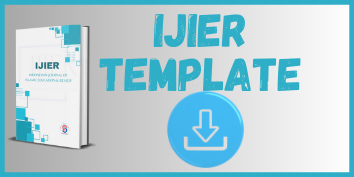Evaluasi Pengembangan Pembelajaran Tahfidz Dengan Metode Talaqqi Dan Audio Visual Pada Anak Usia Dini
DOI:
https://doi.org/10.58230/ijier.v1i2.122Keywords:
Evaluation, audio visual, talaqqi, Development, Tahfidz learningAbstract
Overall, the talaqqi and audio visual methods have proven effective in improving the tahfidz abilities of early childhood at Markaz Alkautsar Magelang, although there are several aspects that need to be improved to achieve more optimal results. This research aims to evaluate the development of tahfidz learning using talaqqi and audio-visual methods in early childhood at Markaz Alkautsar Magelang. The research method used is a combination of observation, interviews, questionnaires and memorization tests to collect data from teachers, parents and children. Aspects evaluated include effectiveness, efficiency, relevance and impact of learning methods on children's tahfidz development. The results showed that the talaqqi and audio-visual methods significantly improved children's memorization abilities. Observations and interviews with teachers revealed that this method was able to increase children's involvement and motivation in learning the Koran. Parents also reported positive improvements in their children's memorization abilities. Analysis of data from the memorization test shows a significant increase between the pre-test and post-test results. However, this research also found several challenges, such as technical difficulties in using audio-visual devices and the need for further training for teachers to maximize the use of these methods. Based on these findings, it is recommended to conduct continuous training for teachers and improve the technological infrastructure at Markaz Alkautsar
Downloads
References
Al-Sulaimani, A. (2018). The Effectiveness of the Talaqqi Method in Quranic Memorization among Primary School Students. Journal of Islamic Studies, 25(2), 123-134.
Braun, V., & Clarke, V. (2006). Using thematic analysis in psychology. Qualitative Research in Psychology, 3(2), 77-101. DOI: https://doi.org/10.1191/1478088706qp063oa
Bryman, A. (2016). Social Research Methods (5th ed.). Oxford University Press.
Cohen, L., Manion, L., & Morrison, K. (2011). Research Methods in Education (7th ed.). Routledge.
Creswell, J. W. (2014). Research Design: Qualitative, Quantitative, and Mixed Methods Approaches (4th ed.). Sage Publications.
Denzin, N. K. (2012). Triangulation 2.0. Journal of Mixed Methods Research, 6(2), 80-88. DOI: https://doi.org/10.1177/1558689812437186
Field, A. (2013). Discovering Statistics Using IBM SPSS Statistics (4th ed.). Sage Publications.
Fraenkel, J. R., Wallen, N. E., & Hyun, H. H. (2012). How to Design and Evaluate Research in Education (8th ed.). McGraw-Hill.
Gibbs, G. R. (2007). Analyzing Qualitative Data. Sage Publications. DOI: https://doi.org/10.4135/9781849208574
Ibrahim, N., & Harun, R. (2019). Direct Instruction and Quranic Memorization: A Comparative Study. Journal of Education and Learning, 8(3), 45-57.
Kurniawati, A. (2021). Enhancing Young Learners' Engagement with Audio-Visual Media. International Journal of Early Childhood Education, 10(1), 89-104.
Kvale, S. (2007). Doing Interviews. Sage Publications. DOI: https://doi.org/10.4135/9781849208963
Patton, M. Q. (2015). Qualitative Research & Evaluation Methods (4th ed.). Sage Publications.
Rahman, M. (2020). Interactive Learning Media in Early Childhood Education. Journal of Educational Technology, 14(2), 67-78.
Yusuf, A. (2022). Impact of Technology on Learning Outcomes in Early Childhood Education. Educational Research Review, 17(4), 205-217.
Downloads
Published
Issue
Section
License
Copyright (c) 2024 Dwi Listiani, Achmad Rasyid Ridho

This work is licensed under a Creative Commons Attribution-ShareAlike 4.0 International License.




